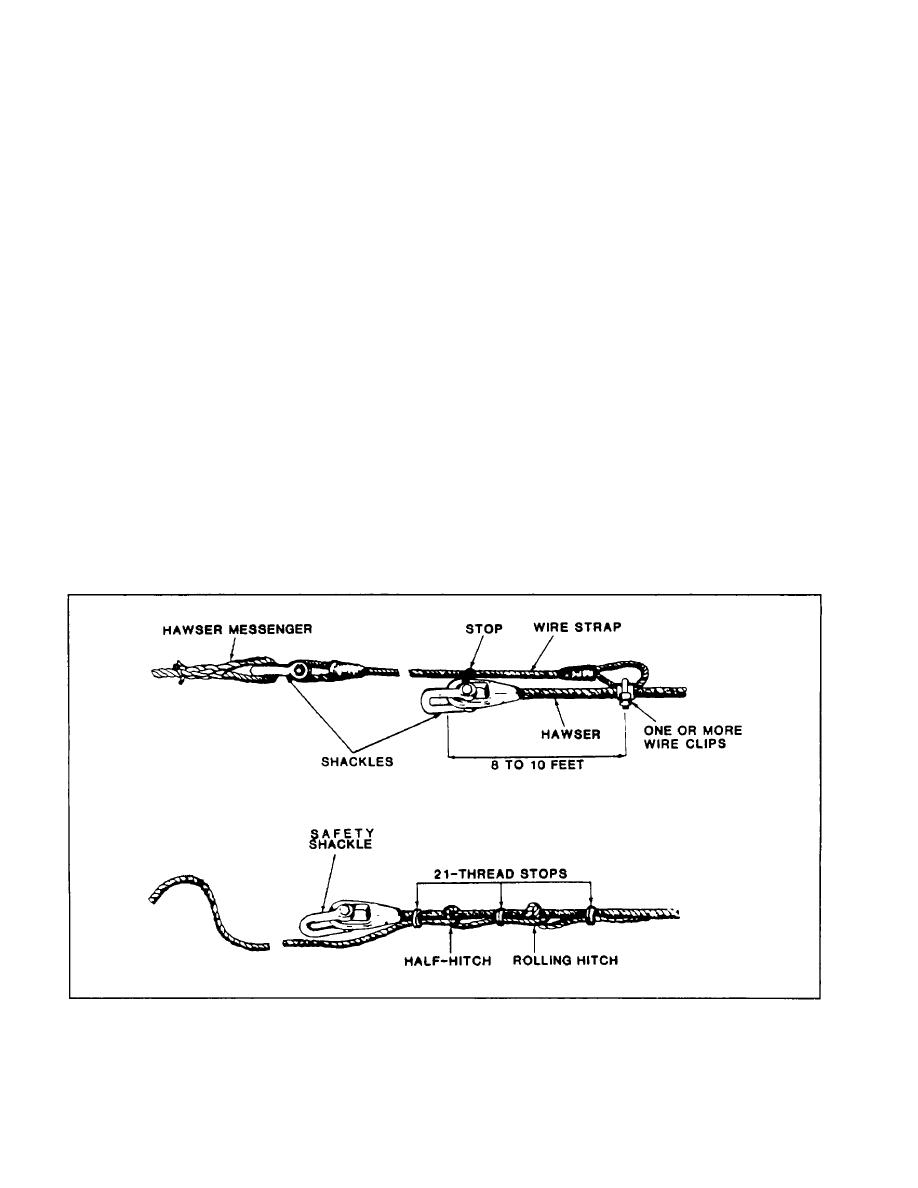
| Tweet |

Custom Search
|
|

|
||
 TB 55-1900-232-10
CAUTION
When picking up a tow, the Conning Officer on the tug should be cautious when increasing speed and should
maintain an even strain on the towing gear. If a readout is not available on the bridge, tow hawser tension
information should be provided to the Conning Officer by the Towing Watch.
3-3.1 FROM A PIER. Getting underway from a pier with a tow requires that the Conning Officer be particularly aware of
the tides, currents and wind. In addition, he and the harbor tug master and pilot should discuss the intended procedures
prior to getting underway.
CAUTION
Care should be exercised when alongside in a seaway. The motions of the tug and tow may be sufficient to part
the mooring lines, resulting in damage and causing the tug to lose control of the tow.
If the tow is made up astern and is of relatively large size, a harbor tug may be used to assist in getting it clear of the
pier. Once the towing ship and the tow are in the channel, the towline should be set at short stay in keeping with the
depth of confined waters to be transited. Keep the catenary shallow to avoid snags.
3-3.2 IN THE STREAM. It may be necessary to get underway and accept a tow in the stream. In this case, the following
procedure can be used. See Figures 4-6 and 4-7. The approximate channel course should be taken with bare steerage
and assisting tugs should bring the tow to the tug's stern. When the tow is near the tug's stern, a riding slip line should be
rigged with its eye on the bitts and then passed to the tow, reeved through a suitable deck chock on the tow and led back
to bitts on the tug. The tow then will be steadied on the riding slip line by the harbor tug(s). The tow should then be
heaved in, the tow connection made and the riding slip line recovered as the tow is streamed.
Figure 3-6. Methods for Securing Messenger to Towline.
3-16
|
||
 |
||